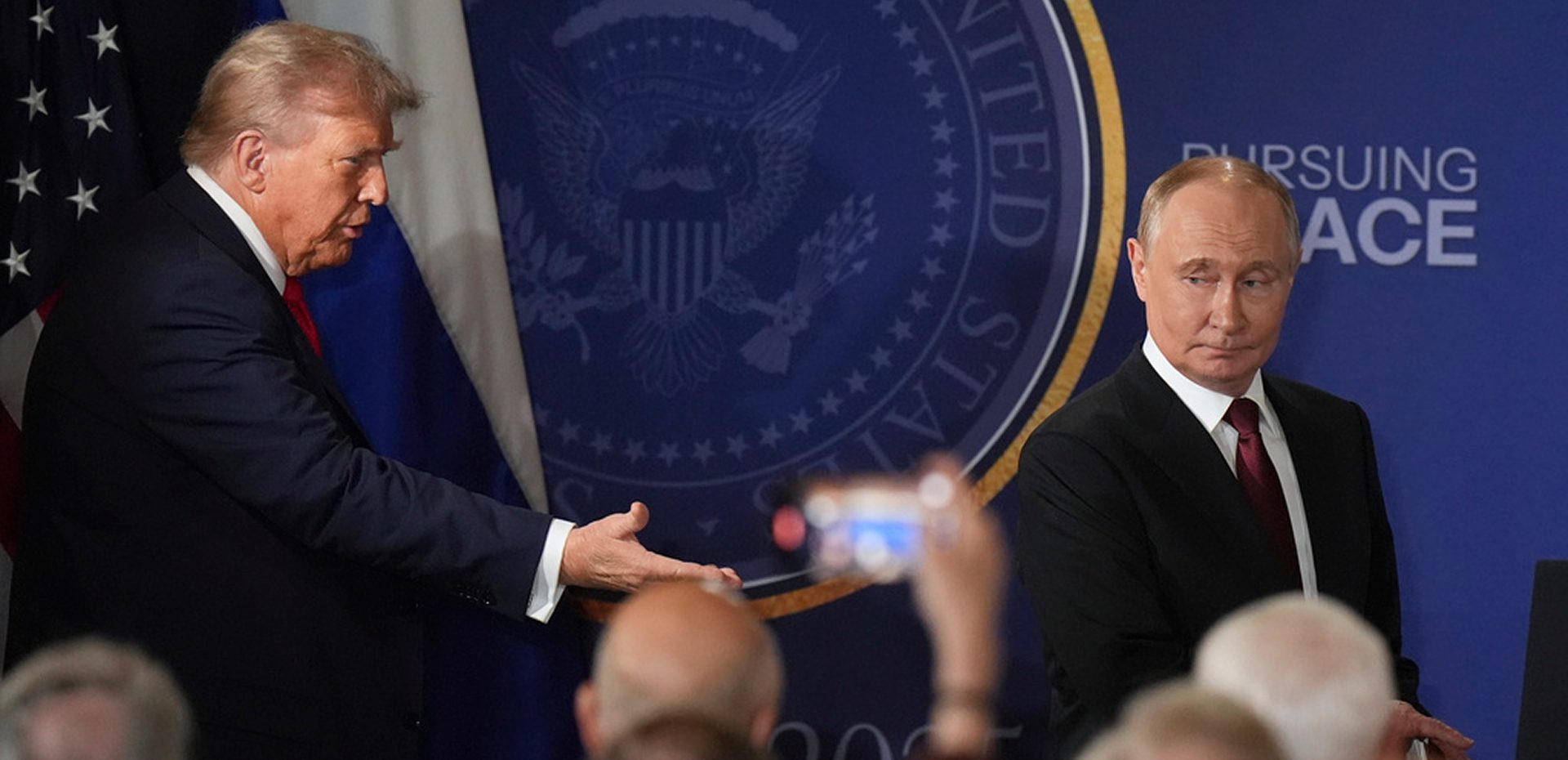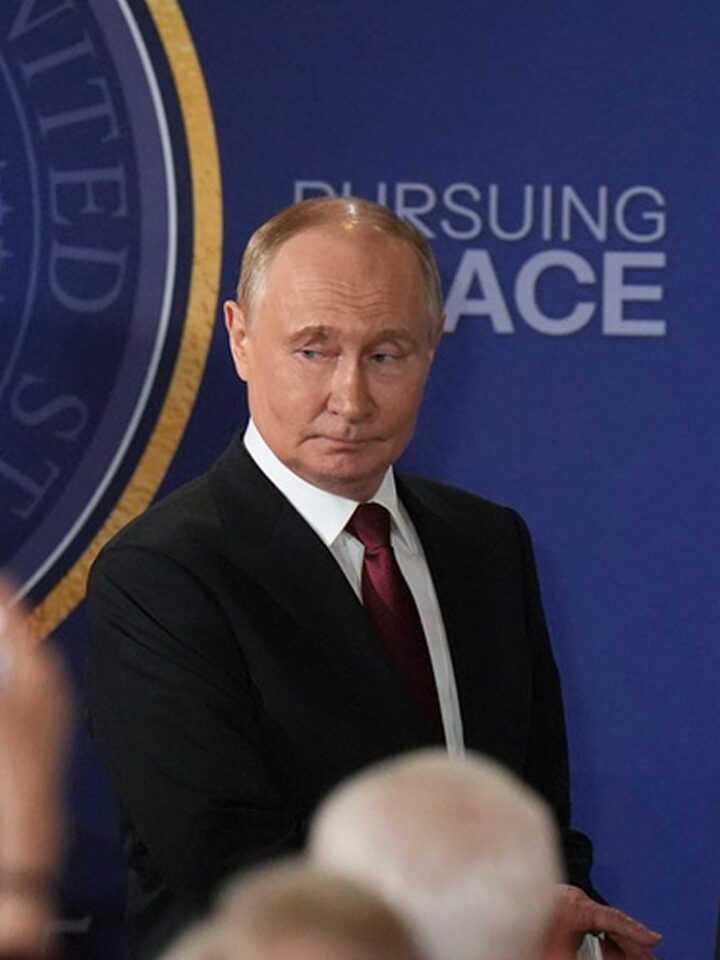The cancellation of the planned Budapest summit between Donald Trump and Vladimir Putin reveals the limits of the US President’s appeasement: the Kremlin interprets any concession as a sign of weakness. Although the threat to supply Ukraine with long-range Tomahawk cruise missiles temporarily rattled Putin, Moscow quickly regained the initiative through diplomatic manoeuvring. The resulting 22 October sanctions imposed by the US on Russia’s energy majors, Rosneft and Lukoil, are unlikely to alter Putin’s calculation that he can continue the war and ultimately achieve victory in Ukraine.
The politics of delay
The collapse of the Budapest summit did not represent defeat for the Kremlin, but rather served as justification for prolonging the war and maintaining diplomatic pressure on the US to put forward a better offer. Moscow recognises that Trump is anxious to secure a swift deal, as he seeks to reinforce his image as a peacemaker. Not for the first time, he appears willing to buy a ceasefire at the expense of Ukrainian territorial concessions, believing that pressuring Kyiv is easier than influencing Moscow. This is seen by Putin as a Trump administration weakness, and he will continue to exploit it for further gains.
Russia has consistently demonstrated that it has no intention of making concessions. Foreign Minister Sergei Lavrov has stated that Russia cannot stop on the battlefield until the root causes of the conflict are addressed. In its ‘unofficial proposals’ made to Washington in late October, the Kremlin once again demanded full control over the Donbas as the price of peace, hoping to be gifted the critical fortress belt cities of western Donetsk that it has failed to win by force of arms. Whereas in August, Trump seemed to accept Putin’s logic that a comprehensive peace agreement must be reached before a ceasefire, he now appears more interested in achieving a ceasefire first, with negotiations on a peace settlement to follow.
At the same time, Moscow continues its diplomatic manoeuvring: Lavrov thanks Trump for his ‘understanding of the deeper causes of the conflict’; he praises first lady Melania Trump for her involvement in humanitarian issues; and Putin’s special envoy, Kirill Dmitriev, proposes that Elon Musk build a ‘Putin-Trump Tunnel’ beneath the Bering Strait. These gestures are designed to foster an atmosphere of ‘special relations’, enabling the Kremlin to maintain dialogue while avoiding concrete commitments.
Washington seeks new leverage
Putin’s continued pressure on Trump is underpinned, in part, by his understanding of the US President’s half-empty toolbox – he has only limited levers of influence over Russia.
The first is economic. Following statements from Moscow that it would not agree to a ceasefire, the US Treasury announced sanctions against Rosneft and Lukoil. However, their impact is likely to be marginal. The bulk of Rosneft’s exports go to China, and it is unlikely that Washington will risk imposing secondary sanctions on Beijing. Lukoil operates refineries in Bulgaria and Romania, but these facilities do not process Russian crude. Any disruptions in this case would primarily affect local markets in those countries, rather than the Russian economy.
There is a high likelihood that both companies will continue exporting through unsanctioned intermediaries. This will necessitate deeper price discounts to buyers, but oil production and export volumes matter more to the Russian economy than foreign currency revenues. Moreover, Trump has already indicated that these measures are not intended to remain in place for long, and their introduction caused a spike in global oil prices, threatening to undermine the White House’s promise to keep petrol prices in the US at around $3 per gallon.
Other initiatives currently under discussion in the US Senate are also largely symbolic and unlikely to inflict serious damage. In the Kremlin, such measures are viewed as yet another attempt at pressure – the kind Russia has long learned to absorb – and are unlikely to compel the Russian President to halt the war.
Which brings us back to force, a language in which the Russian leader is fluent. This was evident from Putin’s renewed willingness to engage at all following Trump’s threat to supply Tomahawk missiles to Ukraine. This prospect clearly alarmed Moscow, as reflected indirectly in the volume of discussion it generated across Russian media. While Putin publicly claimed that such deliveries would not alter the balance of power on the battlefield, he did nonetheless argue they would mark a qualitatively new phase of escalation.
It is possible that the Kremlin interpreted the threat not only as a warning of strikes against infrastructure deep inside Russia, but also as a veiled signal of potential targeted action against the country’s leadership. This may have prompted a sharp response and triggered the initiation of a phone call with the US President. However, Trump abandoned the missile delivery plan too quickly. In Moscow’s eyes, this merely appeared as yet another sign of weakness.
Amid discussions about the possible delivery of long-range missiles to Ukraine, an unexpected development occurred in Russia: youth activism – long perceived as apathetic and depoliticised – began to surface. The trigger was almost incidental: the detention of street musicians performing anti-war songs. Yet this seemingly minor episode set off a chain reaction, prompting petitions, flash mobs, and public expressions of solidarity.
For the authorities, this is a worrying signal. Within the logic of the Putin system, no spontaneous mobilisation is seen as truly spontaneous: if someone takes to the streets, they must be backed by someone – foreign actors, paid organisers, underground networks. As a result, even isolated incidents are interpreted by the Kremlin as part of an external pressure campaign – thereby reinforcing its perceived impact.
Ella Paneyakh
Head of Sociology, NEST Centre
Beyond missile supply, US military options remain constrained: NATO is unlikely to intervene directly in the war with Russia, as doing so may risk nuclear escalation. Putin, for his part, seizes every opportunity to remind the world of this risk. Following the August 15 Anchorage summit, he visited Sarov – a symbolic site linked to the origins of the Soviet nuclear programme.
The US does have one potentially effective diplomatic tool. A temporary rapprochement with China (for example at Trump’s scheduled 30 October talks with Xi Jinping in Seoul) could include measures to pressure Russia. Given that Western sanctions have made Russia’s economy and defence industry heavily dependent on China, such a move would present a serious challenge for the Kremlin.
Yet Beijing has previously stated that it cannot allow Russia to lose the war, as this would free up US capacity to focus more aggressively on China. At the same time, China has no interest in a Ukrainian defeat either, as this could destabilise Europe. That suggests China may be content to see the war drag on.The US President says he will raise the issue of the war in Ukraine with Xi on 30 October. If Trump were able to bring China into talks on a ceasefire and present this as part of a broader ‘reset’ in US-China relations, the Kremlin might be forced to rethink its Ukraine strategy. However, such a move would require a fundamental political shift from Trump, who remains engaged in a trade war with China.



